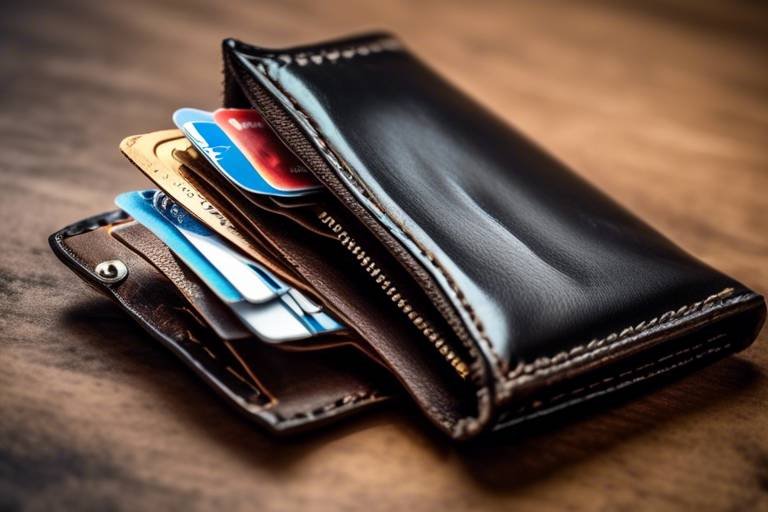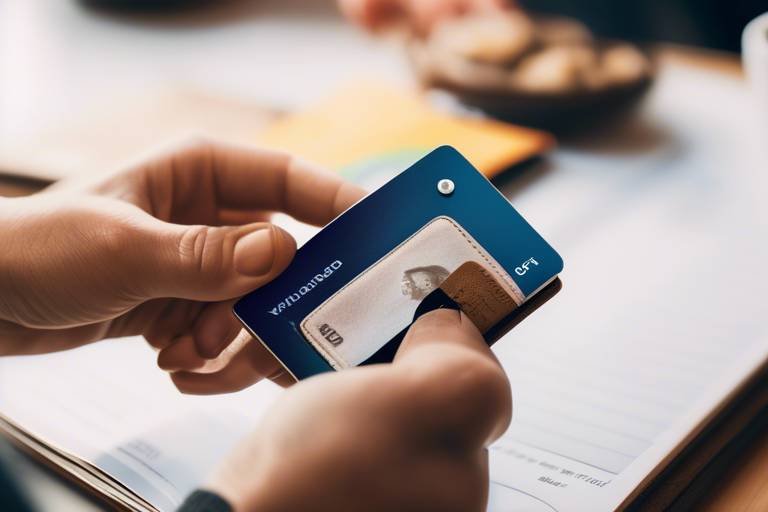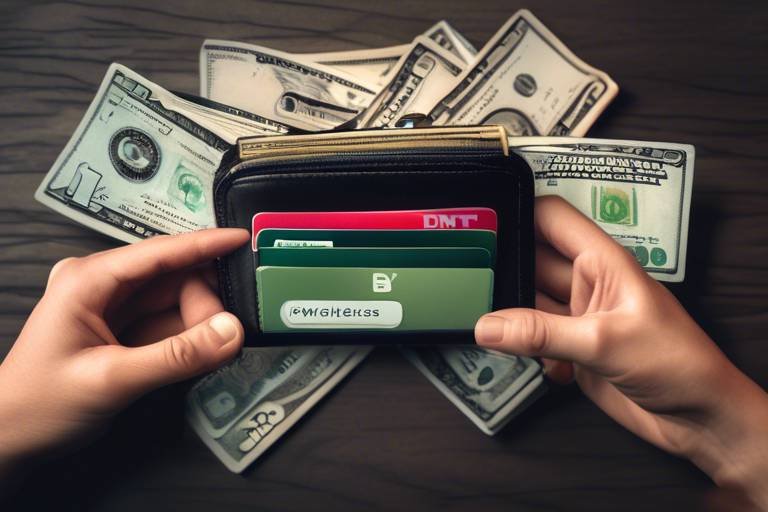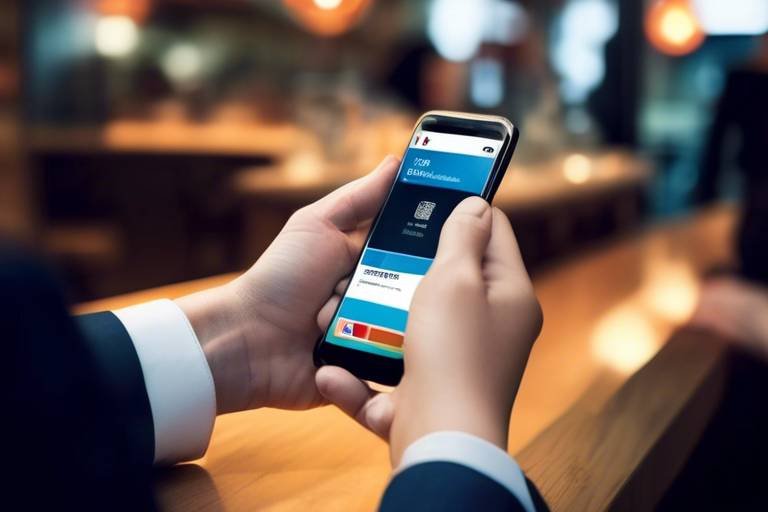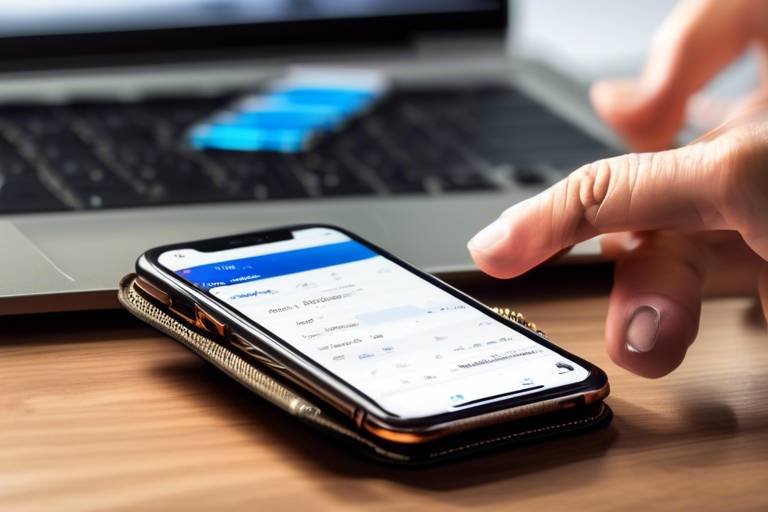Understanding Wallet Migration - When and Why to Switch
In the ever-evolving world of cryptocurrency, wallet migration has become a hot topic among users and investors alike. But what exactly does it mean to migrate your wallet? Simply put, wallet migration refers to the process of transferring your digital assets from one cryptocurrency wallet to another. This transition can be driven by various factors, including the need for improved security, access to better features, or compatibility with new cryptocurrencies. Whether you're a seasoned investor or a newcomer to the crypto space, understanding the ins and outs of wallet migration is crucial for effectively managing your digital assets.
Imagine you're moving houses. You wouldn't just throw everything into boxes without considering what to keep, what to sell, and what to toss away, right? The same principle applies to wallet migration. It's not just about moving your assets; it's about making informed decisions that enhance your overall experience in the crypto landscape. In this article, we'll explore the reasons behind wallet migration, the benefits it can offer, as well as the challenges you might face during the process. By the end, you'll be equipped with the knowledge to navigate your wallet migration smoothly and confidently.
Wallet migration is more than just a technical process; it's a strategic move that can significantly impact your cryptocurrency journey. As you delve deeper into the world of digital currencies, you may find that your current wallet no longer meets your needs. This could be due to various reasons, such as outdated security measures or a lack of support for newer cryptocurrencies. Migrating your wallet can help you keep pace with the rapid changes in the crypto market, ensuring that your assets are secure and accessible.
There are several compelling reasons why users might choose to migrate their wallets. Understanding these motivations can help you make informed decisions about your own wallet management. Here are some of the most common reasons:
- Enhanced Security Features: New wallets often come equipped with advanced security features that can help protect your assets from potential threats.
- Access to New Features: Wallets are constantly evolving, and migrating to one with superior functionalities can streamline your transactions.
- Compatibility with New Cryptocurrencies: As the crypto landscape expands, some wallets may not support the latest coins, necessitating a switch.
One of the primary motivations for wallet migration is the pursuit of enhanced security features. In today's digital age, where cyber threats are rampant, having a wallet with robust security measures is non-negotiable. New wallets often offer advanced encryption and protection mechanisms designed to safeguard your assets against potential attacks. For instance, consider multi-signature wallets that require multiple keys to authorize a transaction. This significantly increases security, making it an excellent choice for businesses or groups managing shared funds.
Multi-signature wallets are a game-changer in the realm of cryptocurrency security. By requiring multiple keys for transaction authorization, they add an extra layer of protection. This feature is particularly beneficial for organizations or groups that need to manage shared funds, as it prevents any single individual from having complete control over the assets.
Another option for enhancing security is migrating to a hardware wallet. These wallets store your assets offline, providing robust protection against hacks and malware. For long-term investors prioritizing security, a hardware wallet can be a smart choice, allowing you to keep your assets safe from the vulnerabilities of online storage.
Wallets continuously evolve, introducing new features that enhance user experience. Migrating to a wallet with superior functionalities can streamline transactions and improve asset management. For example, you may find wallets that offer integrated trading platforms, allowing you to buy, sell, or exchange cryptocurrencies without leaving the wallet interface. This not only saves time but also makes managing your digital assets more convenient.
While wallet migration offers several benefits, it also presents challenges that users should be aware of. Understanding these challenges can prepare you for a smoother transition and help mitigate potential risks. One significant challenge is the potential loss of access to your funds if private keys are not transferred correctly. It’s crucial to ensure that you have all the necessary information before initiating the migration process.
Imagine packing your valuables in a moving truck and then losing the key to the truck. That’s what migrating wallets can feel like if you’re not careful with your private keys. If these keys aren’t transferred correctly, you could lose access to your funds altogether. Therefore, it's essential to double-check and confirm that all necessary information is in hand before you embark on your migration journey.
Another challenge to consider is compatibility. Not all wallets support the same cryptocurrencies, leading to potential compatibility issues during migration. It’s vital to verify that the new wallet can accommodate the assets you intend to transfer. This will save you from the headache of discovering that your new wallet doesn’t support certain coins after the migration is complete.
To ensure a successful wallet migration, users should follow specific best practices. Here are some tips to help minimize risks and enhance your overall experience during the transition:
- Backup Your Wallet: Before migrating, it's crucial to back up your existing wallet. This step ensures that you can recover your funds if any issues arise during the migration process.
- Test with Small Amounts: When migrating to a new wallet, consider testing the process with a small amount first. This approach allows users to familiarize themselves with the new wallet's functionality without risking significant funds.
Q: What is wallet migration?
A: Wallet migration is the process of transferring your digital assets from one cryptocurrency wallet to another, often for reasons such as improved security or access to new features.
Q: How can I ensure a smooth migration?
A: To ensure a smooth migration, always back up your existing wallet and consider testing the new wallet with a small amount before transferring larger sums.
Q: What should I do if I lose access to my funds?
A: If you lose access to your funds, try to recover your private keys or seed phrases. If that fails, consult with customer support for the wallet service you were using.

What is Wallet Migration?
Wallet migration is a term that refers to the process of transferring your digital assets from one cryptocurrency wallet to another. This might sound straightforward, but it encompasses a variety of factors that every crypto user should consider. Just like moving your belongings from one house to another, wallet migration involves careful planning and execution to ensure that nothing gets lost in the process. Understanding wallet migration is crucial for anyone looking to enhance the security of their digital assets or take advantage of better features offered by newer wallets.
In the world of cryptocurrency, wallets serve as the gateway to managing your assets. They come in various forms, including software wallets, hardware wallets, and paper wallets, each with its own set of functionalities and security measures. When you decide to migrate, you're essentially choosing to upgrade your digital asset management experience. But why would someone want to switch wallets? The reasons can be as diverse as the types of cryptocurrencies available today. Some users are driven by the need for enhanced security features, while others may be looking for better user interfaces or support for newer cryptocurrencies.
Moreover, the process of wallet migration isn't just about transferring funds; it involves understanding the intricacies of both the old and new wallets. For example, you need to ensure that the new wallet supports all the cryptocurrencies you hold. If not, you might end up in a situation where some of your assets are left behind, much like forgetting a box in your old house during a move. Therefore, wallet migration is not just a technical task; it’s a strategic decision that requires you to weigh the pros and cons carefully.
To help clarify this concept, let’s break down the wallet migration process into a few key steps:
- Research: Before making a move, investigate the features and security protocols of potential new wallets.
- Backup: Always back up your existing wallet to avoid losing access to your funds.
- Transfer: Carefully initiate the transfer of your assets, ensuring that all private keys are handled securely.
- Verify: After migration, double-check that all assets have been successfully transferred and are accessible in the new wallet.
In summary, wallet migration is a significant step in managing your cryptocurrency assets. It requires a combination of research, planning, and execution to ensure that you make the most out of your digital wallet experience. By understanding what wallet migration entails, you can make informed decisions that align with your financial goals and security needs.

Reasons for Wallet Migration
Wallet migration is not just a technical process; it's a significant decision for anyone involved in the cryptocurrency space. Users may find themselves contemplating a switch for a variety of compelling reasons. One of the most common motivations is the **enhanced security** that newer wallets often provide. As technology advances, so do the methods employed by hackers and cybercriminals. Therefore, migrating to a wallet that offers **advanced encryption** and **robust protection mechanisms** can be a game-changer. Imagine your digital assets as precious jewels; wouldn’t you want them locked away in the safest vault possible?
Another reason for migrating wallets is the access to **new features** that can significantly improve user experience. Cryptocurrency wallets are continuously evolving, and developers are always working to integrate functionalities that make managing digital assets easier and more efficient. For instance, some wallets now provide features like **automated transaction tracking**, **real-time market data**, and **integrated exchange services**. These enhancements can streamline your trading activities and help you stay on top of your investments without the need for multiple applications. Think of it as upgrading from a flip phone to the latest smartphone—everything just becomes more intuitive and user-friendly.
Additionally, the need for **compatibility with new cryptocurrencies** is another driving force behind wallet migration. As the cryptocurrency market expands, new coins and tokens are regularly introduced. If your current wallet doesn’t support these emerging assets, you might miss out on lucrative investment opportunities. For example, some wallets specialize in DeFi tokens or NFTs, which are becoming increasingly popular. Migrating to a wallet that accommodates a wider range of cryptocurrencies can be akin to moving from a small town to a bustling city—suddenly, the possibilities are endless!
Moreover, some users may find themselves dissatisfied with their current wallet's **user interface** or **customer support**. A wallet that’s difficult to navigate can lead to mistakes, especially when dealing with complex transactions. Users might also feel frustrated if they encounter unresponsive customer service when they need help. In these cases, migrating to a wallet that offers a more intuitive interface and better support can significantly enhance the overall experience of managing digital assets.
In conclusion, the reasons for wallet migration are multifaceted and often intertwined. Whether it's for enhanced security, access to new features, compatibility with new cryptocurrencies, or simply a better user experience, understanding these motivations can empower users to make informed decisions. After all, in the dynamic world of cryptocurrency, staying ahead of the curve is essential for safeguarding your investments and maximizing your potential returns.
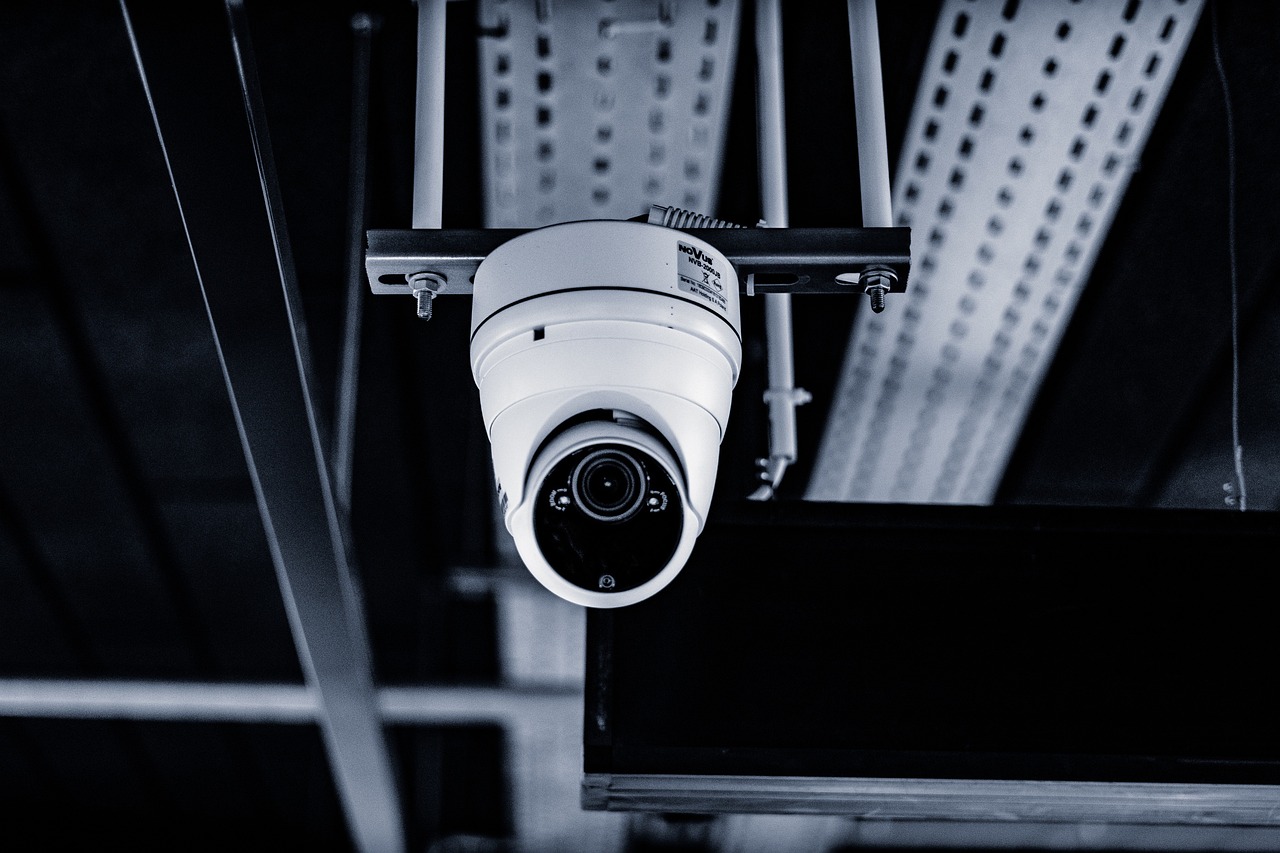
Enhanced Security Features
One of the primary motivations for wallet migration is the pursuit of . In the ever-evolving world of cryptocurrencies, the threats to digital assets are becoming increasingly sophisticated. As a result, users are constantly on the lookout for wallets that provide better protection against hacks, theft, and other vulnerabilities. Migrating to a new wallet often means gaining access to advanced encryption techniques and robust security protocols that can significantly safeguard your digital assets.
For instance, many modern wallets now incorporate features like two-factor authentication (2FA), which adds an extra layer of security by requiring users to provide two forms of identification before accessing their funds. This means that even if someone manages to steal your password, they would still need your second form of verification—like a code sent to your mobile device—to gain access. It's like having a double lock on your front door; it makes it much harder for intruders to break in.
Another noteworthy feature that enhances security is the use of multi-signature wallets. These wallets require multiple private keys to authorize a transaction, which can be particularly beneficial for businesses or groups managing shared funds. Imagine a treasure chest that can only be opened if three keys from three different people are present. This way, no single person can access the funds without the consent of others, thereby reducing the risk of fraud or unauthorized transactions.
Moreover, hardware wallets are another excellent option for users seeking enhanced security. These wallets store your cryptocurrency offline, making them immune to online hacks and malware attacks. For long-term investors who prioritize security, migrating to a hardware wallet can be a smart choice. Think of it as keeping your valuables in a safe rather than a drawer; it’s much less likely to be stolen if it’s stored securely.
In summary, the enhanced security features available in newer wallets are a compelling reason to consider migration. By adopting wallets that offer advanced security measures, users can better protect their investments and navigate the cryptocurrency landscape with greater peace of mind.
- What is wallet migration?
Wallet migration is the process of transferring assets from one cryptocurrency wallet to another, often for improved security or features. - Why should I migrate my wallet?
Users might migrate their wallets for enhanced security, better features, or compatibility with new cryptocurrencies. - What are multi-signature wallets?
Multi-signature wallets require multiple keys to authorize a transaction, increasing security for shared funds. - Are hardware wallets safe?
Yes, hardware wallets store assets offline, providing robust protection against online threats. - How can I ensure a smooth migration?
Backup your existing wallet, test with small amounts, and ensure compatibility with the new wallet.

Multi-Signature Wallets
Multi-signature wallets are a revolutionary approach to enhancing the security of cryptocurrency transactions. Imagine a vault that requires multiple keys to open; this is essentially what a multi-signature wallet does. Instead of relying on a single private key, these wallets require two or more keys to authorize a transaction, which significantly reduces the risk of unauthorized access. This feature is particularly beneficial for businesses or groups managing shared funds, where multiple parties need to agree before any transaction can occur. It’s like having a board meeting before spending the company’s money, ensuring that everyone is on board with the decision.
Using a multi-signature wallet can provide peace of mind, especially in today’s digital landscape, where hacks and security breaches are increasingly common. For instance, if a single key is compromised, the funds remain safe as the attacker would still require additional keys to access the wallet. This layered security approach makes it much harder for malicious actors to steal assets. Moreover, it allows for greater control over funds, as transactions can be set to require a certain number of signatures before proceeding. This can be a game-changer for organizations that need to manage their finances collaboratively.
However, it’s worth noting that while multi-signature wallets offer enhanced security, they also come with their own set of challenges. Setting up a multi-signature wallet can be more complex than traditional wallets, requiring users to understand how to manage multiple keys effectively. Additionally, if a key is lost, it can lead to complications in accessing funds, especially if the wallet is set up in such a way that all keys are needed for transactions. Therefore, it’s crucial to have a solid plan for key management and recovery.
In summary, multi-signature wallets are an excellent option for those looking to enhance their security while managing cryptocurrency. They provide an extra layer of protection and promote collaborative decision-making for fund management. However, users should approach these wallets with a clear understanding of their operational mechanics and ensure proper key management practices are in place.
- What is a multi-signature wallet?
A multi-signature wallet is a type of cryptocurrency wallet that requires multiple private keys to authorize a transaction, enhancing security. - How does a multi-signature wallet improve security?
It reduces the risk of unauthorized access by requiring multiple approvals before any transaction can occur. - What are the challenges of using a multi-signature wallet?
Challenges include the complexity of setup and the risk of losing access if one of the keys is lost. - Who should consider using a multi-signature wallet?
Businesses or groups managing shared funds, as well as individuals seeking enhanced security for their cryptocurrency holdings.

Hardware Wallets
When it comes to securing your cryptocurrency assets, are often hailed as the gold standard. Imagine your digital coins locked away in a vault, far removed from the prying eyes and malicious hands of hackers. That's essentially what a hardware wallet does—it stores your private keys offline, making it significantly harder for cybercriminals to access your funds. Unlike software wallets that are connected to the internet, hardware wallets operate in a completely different realm, providing an extra layer of security that is crucial for long-term investors.
One of the most appealing aspects of hardware wallets is their robust protection against various threats, including malware and phishing attacks. By keeping your private keys offline, these devices minimize the risk of unauthorized access. Think of it as storing your valuables in a safe deposit box rather than under your bed. While the latter might be convenient, it leaves you vulnerable to theft. In contrast, hardware wallets ensure that your keys are only exposed when you need to make a transaction, and even then, they require physical confirmation, adding another layer of security.
Most hardware wallets support multiple cryptocurrencies, which means you can manage different assets from a single device. This feature is especially beneficial for users who have diversified their portfolios. However, it's essential to choose a hardware wallet that is compatible with the specific cryptocurrencies you own. Below is a table showcasing some popular hardware wallets and their supported currencies:
| Hardware Wallet | Supported Currencies |
|---|---|
| Ledger Nano S | Bitcoin, Ethereum, Litecoin, and many others |
| Trezor Model T | Bitcoin, Ethereum, Ripple, and more |
| KeepKey | Bitcoin, Ethereum, Litecoin, and others |
While hardware wallets offer unparalleled security, they are not without their drawbacks. For instance, the initial cost can be a deterrent for some users, as these devices typically range from $50 to $200. However, when you consider the potential loss of funds due to hacking, this investment can be well worth it. Additionally, users need to be diligent about keeping their recovery phrases secure. Losing this phrase can result in permanent loss of access to your assets.
In conclusion, migrating to a hardware wallet can be a smart choice for anyone serious about protecting their cryptocurrency investments. By combining offline storage with multi-currency support and enhanced security features, hardware wallets offer a compelling solution for both novice and experienced investors alike. So, if you're looking to bolster your asset protection strategy, consider making the switch to a hardware wallet—you won’t regret it!
- What is a hardware wallet? A hardware wallet is a physical device that securely stores your cryptocurrency private keys offline, providing enhanced security against online threats.
- Are hardware wallets safe? Yes, hardware wallets are considered one of the safest options for storing cryptocurrencies due to their offline nature and additional security features.
- Can I use a hardware wallet for multiple cryptocurrencies? Yes, most hardware wallets support a variety of cryptocurrencies, allowing you to manage multiple assets from one device.
- What happens if I lose my hardware wallet? If you lose your hardware wallet, you can recover your funds using the recovery phrase provided during setup, as long as you keep it secure.

Access to New Features
In the ever-evolving world of cryptocurrency, wallet technology is constantly advancing. This means that by migrating to a new wallet, users can access a plethora of new features designed to enhance their overall experience. Imagine upgrading from an old flip phone to the latest smartphone; the difference in functionality and convenience is staggering! The same analogy applies when switching wallets.
New wallets often come equipped with features that streamline transactions, improve user interfaces, and enhance asset management capabilities. For instance, many modern wallets now offer integrated exchanges, allowing users to swap cryptocurrencies directly within the wallet without needing to visit external exchanges. This not only saves time but also minimizes the risk of losing funds during the transfer process.
Additionally, some wallets provide advanced analytics tools that allow users to track their portfolio performance in real-time. These tools can help users make informed decisions based on market trends and personal investment goals. Imagine having a personal financial advisor right in your pocket, guiding you through your cryptocurrency journey!
Moreover, the introduction of mobile compatibility in many wallets means that users can manage their assets on-the-go, providing flexibility that was previously unavailable. This is particularly beneficial for those who are always on the move and need to stay updated with their investments.
To further illustrate the advantages of migrating to wallets with new features, consider the following table showcasing some common features found in modern wallets:
| Feature | Description |
|---|---|
| Integrated Exchange | Swap cryptocurrencies directly within the wallet. |
| Portfolio Analytics | Real-time tracking of portfolio performance. |
| Multi-Currency Support | Manage various cryptocurrencies in one place. |
| Mobile Compatibility | Access and manage assets from your smartphone. |
In conclusion, migrating to a new wallet can open the door to a world of innovative features that significantly enhance the user experience. By staying up-to-date with the latest technology, users can ensure that they are making the most of their digital assets while enjoying the convenience and security that comes with modern wallet solutions.
Q1: What should I consider before migrating my wallet?
A1: Before migrating, consider the security features, compatibility with your assets, and any new functionalities that the new wallet offers. It’s also wise to back up your existing wallet.
Q2: Can I lose my funds during the migration process?
A2: Yes, if the migration is not done correctly, there is a risk of losing access to your funds. Always ensure you have your private keys and backup before starting the process.
Q3: Are there any wallets that are recommended for beginners?
A3: Yes, some wallets are user-friendly and designed specifically for beginners. Look for wallets with intuitive interfaces and strong customer support.
Q4: How can I ensure that my new wallet is secure?
A4: Research the wallet's security features, read user reviews, and check if it offers two-factor authentication or multi-signature capabilities.

Challenges of Wallet Migration
While the idea of wallet migration might sound exciting, it’s not all sunshine and rainbows. There are several challenges that users need to be aware of before diving into the process. Understanding these challenges can help you prepare better and navigate the often tricky waters of cryptocurrency management.
One of the most daunting challenges is the loss of access to your funds. Imagine spending hours transferring your digital assets only to realize you can’t access them because you forgot to transfer your private keys or recovery phrases correctly. It’s a nightmare scenario that can happen if users aren’t meticulous. That's why it's critical to double-check that you have all the necessary information stored safely before you initiate any migration.
Another hurdle is the potential for compatibility issues. Not all wallets support the same cryptocurrencies, and this can lead to significant headaches during the migration process. For instance, if you're moving from a wallet that supports a wide range of altcoins to one that only supports Bitcoin, you could find yourself in a tight spot. Before making the switch, always verify that your new wallet can accommodate all the assets you plan to transfer. Conducting thorough research can save you from a lot of trouble down the line.
Additionally, the process of migration itself can be fraught with technical challenges. Different wallets have different interfaces, and some may require you to follow specific steps to complete the transfer. If you're not tech-savvy, this can be overwhelming. It's essential to familiarize yourself with the new wallet's features and functionalities before attempting to migrate. Checking out user guides or tutorials can be incredibly helpful.
In summary, while wallet migration can offer numerous benefits, it’s crucial to be aware of the challenges that come with it. By preparing adequately and understanding these potential pitfalls, you can make your migration process much smoother and less stressful.
- What should I do if I lose access to my wallet after migration?
If you lose access, try to recover your wallet using the backup you created before migration. If that fails, consult the wallet provider's support for further assistance.
- How can I ensure my new wallet is compatible with my cryptocurrencies?
Before migrating, check the new wallet's official website or documentation for a list of supported cryptocurrencies. This will help you avoid any compatibility issues.
- Is it safe to migrate wallets?
Yes, as long as you take the necessary precautions, such as backing up your wallet and following the correct migration steps. Always do your research and choose a reputable wallet.

Loss of Access
When considering wallet migration, one of the most daunting challenges users face is the potential for to their funds. Imagine this: you've carefully decided to switch wallets, excited about the enhanced features and security, but in the process, you accidentally misplace your private keys or fail to transfer them correctly. The thought of losing your hard-earned cryptocurrencies can be terrifying, right? This risk is particularly real for those who may not fully understand the migration process or the importance of their private keys.
To avoid this nightmare scenario, it’s crucial to take a few proactive steps before initiating the migration. Here’s a breakdown of what you should keep in mind:
- Understand Your Private Keys: Your private keys are the gateway to your cryptocurrency. Without them, you cannot access your funds. Make sure you know where they are and how to securely transfer them.
- Double-Check Compatibility: Ensure that the new wallet supports the same cryptocurrencies you currently hold. If not, you might find yourself in a tricky situation, unable to access your assets.
- Secure Your Backup: Create a backup of your existing wallet before starting the migration. This backup can be a lifesaver if anything goes wrong during the process.
Moreover, users should be aware that some wallets utilize different formats for storing private keys. This discrepancy can lead to complications during migration. For instance, if your old wallet uses a specific encryption method that the new wallet doesn’t support, you could potentially lock yourself out of your funds. Always read the documentation provided by both wallets to understand the best practices for transferring your assets.
To further illustrate the importance of safeguarding your access, consider this table comparing the risks associated with wallet migration:
| Risk Factor | Description | Mitigation Strategy |
|---|---|---|
| Loss of Private Keys | Failure to correctly transfer or back up private keys can lead to loss of access. | Always back up and securely store private keys before migration. |
| Incompatible Wallets | Not all wallets support the same cryptocurrencies, leading to access issues. | Research wallet compatibility beforehand. |
| Technical Errors | Errors during the transfer process can result in lost transactions. | Perform test transactions with small amounts first. |
In summary, while wallet migration can open doors to improved security and features, it’s essential to approach the process with caution. By understanding the risks associated with loss of access and implementing the suggested strategies, you can significantly enhance your chances of a smooth and successful transition.
Q: What should I do if I lose my private keys during migration?
A: If you lose your private keys, unfortunately, you may lose access to your funds permanently. Always ensure you have multiple backups in secure locations before initiating any migration.
Q: How can I ensure my new wallet is secure?
A: Research the wallet’s security features, read user reviews, and check if it has undergone third-party security audits. Opt for wallets that offer multi-signature options and hardware wallet capabilities for enhanced security.
Q: Is it safe to migrate my wallet during market volatility?
A: While it’s generally safe to migrate at any time, doing so during market volatility might add stress. It’s best to choose a calm period for migration to focus on the process without distractions.

Compatibility Issues
When it comes to wallet migration, one of the most daunting challenges that users face is . Not all wallets are created equal, and this can lead to significant complications when transferring your digital assets. Imagine trying to fit a square peg into a round hole; this analogy perfectly captures the essence of what happens when your new wallet doesn’t support the same cryptocurrencies as your old one. Before initiating a migration, it's crucial to verify that the new wallet can accommodate the specific assets you're looking to transfer.
Some wallets are designed to support a wide range of cryptocurrencies, while others may only cater to a select few. This disparity can result in situations where users find themselves unable to access their funds post-migration. For instance, if you migrate from a wallet that supports Bitcoin, Ethereum, and Litecoin to one that only supports Bitcoin, you might lose access to your Ethereum and Litecoin holdings. Therefore, conducting thorough research on the compatibility of your new wallet is not just a recommendation; it’s a necessity.
To help you navigate this potential pitfall, here are some key considerations:
- Check Supported Coins: Always check the list of supported cryptocurrencies on the new wallet's website before migrating.
- Research Wallet Features: Look for wallets that offer features like multi-currency support if you hold various types of cryptocurrencies.
- Read User Reviews: User experiences can provide insights into any compatibility issues others have faced.
In conclusion, compatibility issues during wallet migration can be a significant hurdle, but with the right preparation and research, you can avoid these pitfalls. Remember, the goal is to ensure that your digital assets remain accessible and secure throughout the migration process.
Q1: What happens if I migrate to a wallet that doesn't support my cryptocurrency?
A: If you migrate to a wallet that doesn't support your cryptocurrency, you may lose access to those funds. It's crucial to ensure that the new wallet supports all the cryptocurrencies you hold before migrating.
Q2: How can I check if my new wallet supports my cryptocurrencies?
A: You can check the wallet's official website or user documentation, which typically includes a list of supported cryptocurrencies. Additionally, user reviews and forums can provide insights into compatibility.
Q3: Is it safe to migrate my wallet?
A: While migrating your wallet can be safe, you must take precautions, such as backing up your existing wallet and ensuring that you are transferring to a reputable wallet that supports your assets.

Tips for a Smooth Migration
Migrating your cryptocurrency wallet can be a daunting task, but with the right approach, it can be a seamless experience. First and foremost, backing up your wallet is essential before you even think about migrating. This step acts as your safety net, ensuring that if anything goes awry during the transfer, you won't be left high and dry. Imagine trying to change your bank account without a backup; it's a recipe for disaster! So, save those private keys and recovery phrases in a secure location.
Another smart move is to test the waters with a small amount of cryptocurrency before diving in headfirst. This way, you can familiarize yourself with the new wallet's interface and features without putting a significant chunk of your assets at risk. Think of it as dipping your toes into a pool before jumping in; you want to know what you're getting into!
Additionally, it’s wise to double-check compatibility between your old and new wallets. Not all wallets are created equal, and some may not support the same cryptocurrencies. Before making the switch, ensure that the new wallet can accommodate all the assets you plan to migrate. This step is crucial to avoid any compatibility hiccups that could lead to lost funds. To help visualize this, consider creating a simple
| Cryptocurrency | Old Wallet Support | New Wallet Support |
|---|---|---|
| Bitcoin (BTC) | Yes | Yes |
| Ethereum (ETH) | Yes | Yes |
| Litecoin (LTC) | No | Yes |
| Ripple (XRP) | Yes | No |
Finally, remember to stay informed about the latest updates and features of your new wallet. Many wallets offer tutorials and customer support that can be incredibly helpful during your migration process. Engaging with community forums or support channels can provide valuable insights and tips from other users who have successfully made the switch. This shared knowledge can be a game-changer, helping you navigate any potential pitfalls.
Q1: What should I do if I lose my private keys during migration?
A1: If you lose your private keys, it can be challenging to recover your funds. Always ensure you have a backup before starting the migration process. If you have a backup, you can restore your wallet.
Q2: Can I migrate my wallet without losing any funds?
A2: Yes, if you follow the right steps, such as backing up your wallet and testing with small amounts, you can migrate without losing funds.
Q3: How do I know if my new wallet is secure?
A3: Research the wallet's security features, read reviews, and check for any reported hacks or vulnerabilities. A reputable wallet will have strong encryption and user feedback to back its security claims.

Backup Your Wallet
Backing up your wallet is not just a precaution; it's an essential step in the wallet migration process that can save you from potential headaches down the line. Imagine putting all your hard-earned cryptocurrency into a wallet, only to lose access due to a technical glitch or human error. It's a nightmare scenario that can be easily avoided with a little foresight. By creating a backup, you ensure that your assets are safe and sound, even if something goes wrong during the migration.
So, how do you go about backing up your wallet? The process can vary depending on the type of wallet you’re using—whether it’s a software wallet, hardware wallet, or a paper wallet. Typically, most wallets will provide you with a recovery phrase or seed phrase when you first set them up. This phrase is a series of words that acts as a key to your wallet. It's crucial to write this down and store it in a safe place, away from prying eyes. Here are a few tips to consider when backing up your wallet:
- Store Your Recovery Phrase Safely: Keep it in a secure location, like a safe or a locked drawer. Avoid digital storage unless it's encrypted.
- Use Multiple Backup Methods: Consider having both a physical backup (like a written copy) and a digital backup (like an encrypted file).
- Regularly Update Your Backup: If you make any changes to your wallet, such as adding new assets, make sure to update your backup accordingly.
Additionally, for users migrating from one wallet to another, it's wise to perform a test run. This means transferring a small amount of cryptocurrency to your new wallet first, ensuring that everything works smoothly before committing the bulk of your assets. This way, you can validate that your backup is functional and that you can recover your funds if necessary.
In the world of cryptocurrency, where the stakes are high and the risks are real, taking the time to back up your wallet can make all the difference. It’s like having an insurance policy for your digital assets. So, don’t skip this step; your future self will thank you!
- What is a wallet backup? A wallet backup is a copy of your wallet's data, typically including your recovery phrase or seed phrase, that allows you to restore access to your cryptocurrencies if your wallet is lost or damaged.
- How often should I back up my wallet? You should back up your wallet every time you make significant changes, such as adding new cryptocurrencies or after any major updates to the wallet software.
- What should I do if I lose my recovery phrase? If you lose your recovery phrase, you may lose access to your funds permanently. It's crucial to store it securely and consider using multiple backup methods.
- Can I back up my wallet on my computer? While you can back up your wallet digitally, it's safer to store backups offline, such as on a USB drive or in a physical format, to protect against hacks.

Test with Small Amounts
When it comes to wallet migration, one of the smartest moves you can make is to test the waters with small amounts before diving in headfirst. Think of it like dipping your toes into a swimming pool before taking the plunge. You wouldn’t want to jump into the deep end without knowing how the water feels, right? Similarly, testing your new wallet with a minimal amount allows you to gauge its functionality and ensure everything works as expected without putting your entire investment at risk.
This initial test can help you familiarize yourself with the new wallet's interface and features. For instance, you might discover that the way transactions are initiated is different from what you're used to, or you might encounter unique features that could enhance your overall experience. By sending a small amount, you can check if the transfer goes smoothly and if the funds appear in your new wallet without any hiccups. This simple step can save you a lot of headaches in the long run.
Moreover, during this trial phase, you should keep an eye out for any potential issues, such as:
- Transaction Fees: Different wallets may have varying fee structures. Understanding these can help you avoid unexpected costs.
- Transfer Times: Some wallets might process transactions faster than others. Knowing this can help you plan your transactions better.
- User Experience: Is the new wallet intuitive? Does it meet your needs? Testing can reveal if it’s a good fit.
Once you’ve successfully completed a small transaction and are satisfied with the results, you can confidently proceed with migrating larger amounts. Remember, the goal is to ensure a smooth transition that protects your assets while enhancing your overall cryptocurrency experience. So, take your time, test wisely, and enjoy the journey!
1. What should I do if I lose access to my old wallet?
It's crucial to have a backup of your wallet before migration. If you lose access, you can restore it using your backup.
2. Can I migrate my wallet multiple times?
Yes, you can migrate your wallet as many times as you need. Just ensure you follow the proper steps each time to avoid losing access to your funds.
3. Are all wallets compatible with every cryptocurrency?
No, not all wallets support every cryptocurrency. Always check the compatibility of your new wallet with the assets you hold.
4. How do I know which wallet to choose?
Consider factors like security features, user interface, supported cryptocurrencies, and reviews from other users before making your decision.
Frequently Asked Questions
- What is wallet migration?
Wallet migration is the process of transferring your cryptocurrency assets from one wallet to another. This can be done for various reasons, such as improving security, accessing better features, or ensuring compatibility with new cryptocurrencies.
- Why should I consider migrating my wallet?
There are several compelling reasons to migrate your wallet. For instance, you might want to take advantage of enhanced security features, like multi-signature or hardware wallets, or you may need a wallet that supports new cryptocurrencies you wish to invest in.
- What are the potential risks of wallet migration?
While wallet migration can be beneficial, it does come with risks. Users may face loss of access to funds if private keys are not transferred correctly, or they might encounter compatibility issues if the new wallet doesn’t support certain cryptocurrencies.
- How can I ensure a smooth wallet migration?
To ensure a successful migration, it's essential to back up your existing wallet first. Testing the migration process with a small amount can also help familiarize you with the new wallet's functionalities without risking significant funds.
- What is a multi-signature wallet?
A multi-signature wallet is a type of wallet that requires multiple private keys to authorize a transaction. This feature significantly boosts security, making it an excellent choice for businesses or groups managing shared funds.
- How do hardware wallets enhance security?
Hardware wallets store your cryptocurrency assets offline, providing robust protection against hacks and malware. For long-term investors, migrating to a hardware wallet can be a smart move to safeguard their investments.
- What should I do if I lose access to my wallet during migration?
If you lose access to your wallet during migration, having a backup of your wallet is crucial. This backup can help you recover your funds. Always ensure you have all necessary information before starting the migration process.



